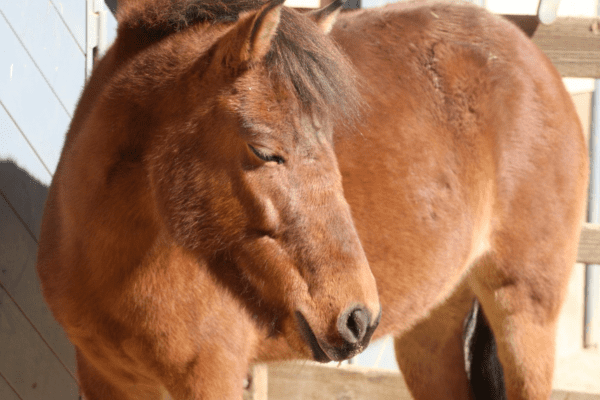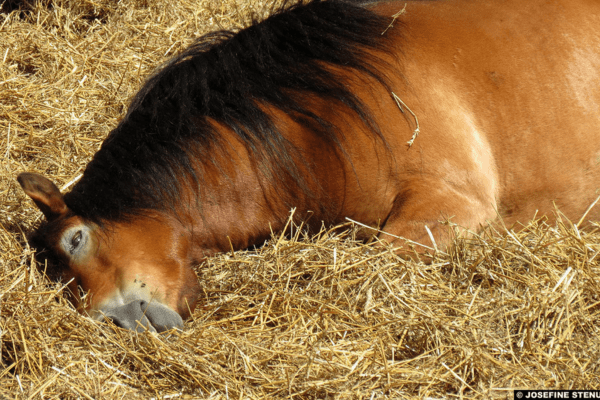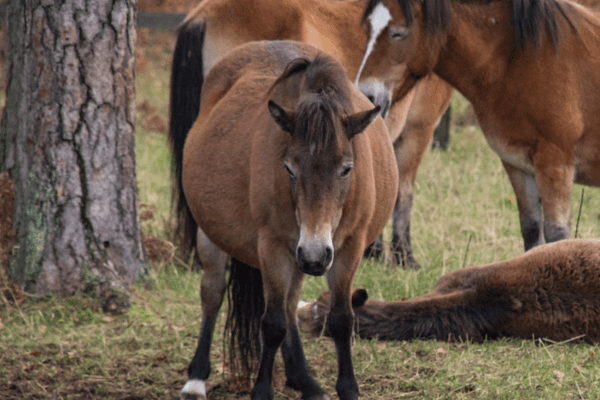The Gotland Pony, often referred to as the Russ, is a distinguished breed and the most prevalent among ponies in Sweden. Its lineage, steeped in intrigue, hails from the picturesque island of Gotland, located off the south-eastern coast of Sweden.
While there is a popular belief linking the Gotland Pony to the extinct Tarpan, a primitive wild horse, recent genetic research suggests a developmental trajectory similar to other domesticated horse breeds. This casts doubt on its direct lineage from the Tarpan. Regardless of its exact historical roots, the Gotland Pony remains a celebrated and integral part of Sweden’s equine heritage.
History:
The Gotland Pony, more popularly known by its Swedish moniker the Russ, boasts an incredible story deeply embedded into Sweden’s equine heritage.
Found mainly on Gotland Island off Sweden’s southeastern coast, these ponies can trace their lineage back at least as far as 3,000 BC with some theories suggesting its lineage could connect back to extinct Tarpan wild horse species; however genetic analyses indicate more recent domestication patterns more characteristic of other horse breeds.
Ancestral Roots and Uncertain Connections: The Gotland Pony’s ancestral origins remain uncertain, as its relationship to ancient Gotland equines remains unknown.
Although popular belief holds them connected with Tarpan horses, DNA evidence indicates a typical domestication trajectory rather than any connection with these ancient species.
Etymology and Local Significance: The term ‘Russ’ comes from Old Norse word hross (horse). On Gotland Island these ponies live semi-wild within forests; hence their affectionate nickname of skogsbaggar or forest rams reflects their importance within Swedish countryside, particularly on Gotland where they have been the sole breed for millennia.
Population Decline and Conservation Efforts: During the 19th century, Gotland Ponies thrived with roughly 12,000 individuals; however, due to changes in land ownership, agricultural practices, and export of ponies for labor purposes; their numbers quickly declined after World War I with only around 30 broodmares remaining by 1930.
Revival and Genetic Diversity: Thanks to local farmers and the Gotland Agricultural Society, the Gotland Pony experienced a miraculous revival.
A breeding program, begun with just eight ponies of which five were wild ponies, played an instrumental role in saving and revitalizing this breed from extinction while simultaneously adding new genetic variants that has since increased genetic diversity considerably – more so than many other horse breeds including Thoroughbreds!
Current Status and Global Presence: At present, Sweden hosts approximately 9,000 Gotland Ponies; 150 roam freely through Gotland’s forests and meadows under careful breeding, health checks, and year-round supervision programs.
Their popularity across Denmark, Finland, Norway, North America as well as European markets speaks to their versatility and adaptability, making them increasingly desirable breeds in equestrian circles.


Characteristics:
The Gotland Russ, an impressive breed with origins on Sweden’s Gotland island, is revered for its distinct traits that reflect both its heritage and adaptability. This breed is revered for its rustic charm, robust constitution, economical needs and vibrant energy; when it comes to appearance it shares characteristics with breeds like Hucul, Konik and Exmoor Ponies known for endurance and hardiness.
Physical Attributes: Gotland Russes typically weigh around 250 kilograms, providing the ideal combination of strength and agility. In terms of height, these ponies usually stand between 117 cm to 132 cm at their withers – making them medium-sized breeds. Their size makes them suitable for various equestrian activities as they combine power with manageability.
Coat and Color: The Gotland Russ typically displays coat colors of dun, bay, chestnut or black to add visual appeal and demonstrate genetic diversity. Unfortunately, their breed standards prohibit certain variants such as blue-eyed cream, piebald or grey variants from registration; previously spotted coats were an intriguing aspect to its genetic evolution; these traits have since disappeared with time.
Adaptability and Resilience: The Gotland Russ’ hardy nature and frugal lifestyle illustrate its ability to thrive in various environments. Their adaptability makes them suitable for recreational riding or more rigorous physical activities such as dressage.
Conservation and Breed Standards: Protecting Gotland Russ requires adhering to stringent breed standards that will preserve its unique traits and historical significance for future generations. Such standards not only help keep its purity alive but are essential in its conservation.


